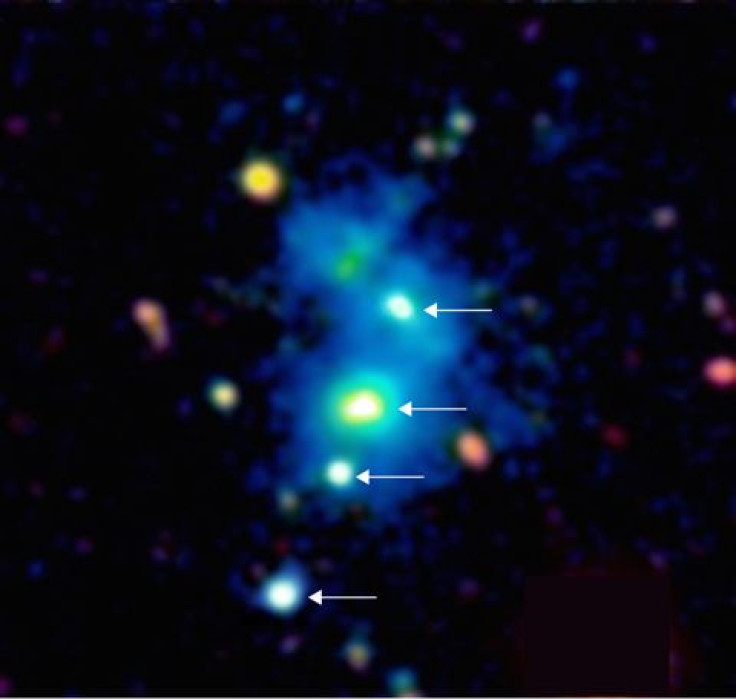Quadruple Quasar Spotted In A Single Nebula, ‘Extremely Rare’ Find Baffles Astronomers [PHOTO]

Astronomers recently won what amounts to the cosmic lottery with the unexpected discovery of a rare quadruple quasar, the first of its kind ever documented. The four quasars – extremely bright masses of light and energy that exist only in the farthest reaches of the known universe – were found huddled together in a nebula 10 billion light-years away, the first time four quasars have ever been spotted so close together, according to the atronomers' findings published Friday in the journal Science. The discovery may force astronomers to rethink quasar evolution and how the massive structures form in the first place.
Quasars are rarely located in the same vicinity. There is usually about 100 million light years separating quasars, but the recently-discovered quasar cluster was found within a mere 700,000 light-years of each other – one in 10 million odds, researchers said.
“If you discover something which, according to current scientific wisdom should be extremely improbable, you can come to one of two conclusions: either you just got very lucky, or you need to modify your theory,” Joseph Hennawi, an astronomer from the Max Planck Institute for Astronomy in Heidelberg, Germany, and lead author if the study, said in a statement. “Extremely rare events have the power to overturn long-standing theories.” Images of the quasar quartet were taken from the Keck Observatory in Hawaii.
Quasars are the result of massive black holes left behind from the early days of the universe. They emit huge amounts of light and energy, the result of the violent reaction of gas, dust and other material with a black hole. Their light can measure 100 times brighter than the entire Milky Way galaxy, according to Popular Science.
The quadruple quasar wasn’t the first quasar discovery to rock the scientific community. In 2013, astronomers discovered a cluster of 73 quasars, consider the largest structure ever seen in the universe. The quasars occupied a region that spanned 4 billion light-years, according to Discovery. Researchers encountered the structure while mapping high-energy gamma ray bursts, which are caused by exploding massive stars.
The massive quasar cluster at first posed a problem for astronomers because according to the cosmological principle, a concept based on the work of Albert Einstein, the largest object possible in the universe should measure about 1.2 billion light-years across.
© Copyright IBTimes 2024. All rights reserved.












